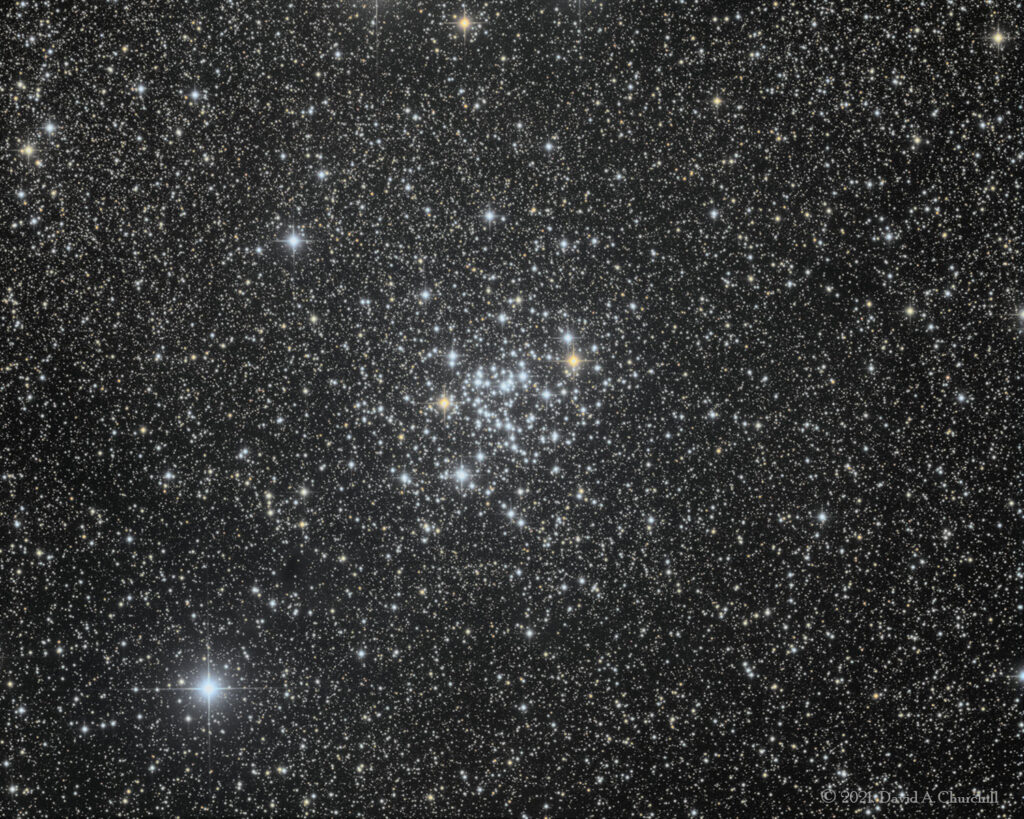NGC 3766 (Caldwell 97)
Open Cluster, Centaurus
- Description
- Technical
- Links
NGC 3766 (also known as Caldwell 97) is an open star cluster in the southern constellation Centaurus. It is located in the vast star-forming region known as the Carina molecular cloud, and was discovered by Nicolas Louis de Lacaille during his astrometric survey in 1751–1752. At a distance of about 1745 pc, the cluster subtends a diameter of about 12 minutes of arc.
There are 137 listed stars, but many are likely non-members, with only 36 having accurate photometric data. Total apparent magnitude of 5.3 and integrated spectral type of B1.7. NGC 3766 is relatively young that is estimated as log (7.160) or 14.4 million years, and approaching us at 14.8 km/s. This cluster contains eleven Be stars, two red supergiants and four Ap stars.
36 examples of an unusual type of variable star were discovered in the cluster. These fast-rotating pulsating B-type stars vary by only a few hundredths of a magnitude with periods less than half a day. They are main sequence stars, hotter than δ Scuti variables and cooler than slowly pulsating B stars.
Telescope: Planewave CDK17 (FR) f4.5
Mount: Astro Physics 1600GTO
Camera: QHY16200A/ Integral FW
Guider: Agena Starguide II / SBIG STi
L: 24×5 mins = 120 mins, R: 24×5 mins = 120 mins, G: 24×5 mins = 120 mins, B: 24×5 mins = 120 mins
Total Imaging Time: 8h 00m
Data Imaged remotely over 2 nights during March 2021.
Imaged from Observatorio El Sauce, Chile, in partnership with Fred Espenak.
Data acquisition & Processing by David Churchill.
None

